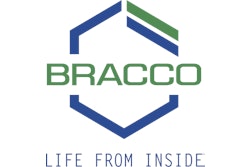Multidetector-row CT may soon find itself in competition with MRI for the imaging of endoleaks after endovascular repair (EVAR) of abdominal aortic aneurysms.
A study from Switzerland found that MRI combined with a high relaxivity contrast agent (gadobenate dimeglumine) had "significantly high sensitivity" for endoleak detection after EVAR when compared with MDCT.
"Endovascular repair of abdominal aortic aneurysms has become a reliable alternative treatment to open surgery for many patients," said study co-author Dr. Rolf Wyttenbach of Ospedale San Giovanni in Bellinzona, Switzerland. "Endoleak development represents a complication after EVAR. Endoleaks are characterized by blood flow outside the stent graft lumen."
While CT is most commonly used to image after EVAR, Wyttenbach cited previous research suggesting that MRI may be superior to CT for the detection of endoleaks. Those studies mostly used single-slice CT in the comparisons, he added, while presenting results at the annual meeting of the American Roentgen Ray Society (ARRS) in Washington, DC.
MDCT versus MRI
Swiss researchers analyzed 16-slice MDCT and MRI, reviewing 43 patients (42 male and one female; mean age of 72 years) after endovascular repair. The mean time after intervention was 35 months. All patients underwent both MDCT and MRI scans within one week.
The MDCT exams included unenhanced and biphasic contrast-enhanced procedures. The MRI scan was on a 1.5-tesla system and was performed using the high relaxivity contrast agent MultiHance from Bracco Diagnostics of Princeton, NJ.
Two independent and blinded observers separately assessed all MDCT and MRI studies. Consensus reading of CT and MR studies was defined as the standard of reference. Information on the endoleaks included the assessment of their presence, the type of endoleak, and the dimensions.
"A total of 28 endoleaks in 18 different patients were found; 12 of these endoleaks were type two endoleaks that are characterized by retrograde blood flow through aortic branch vessels," said Wyttenbach. "Eight endoleaks were classified as indeterminate."
'Most striking finding'
In the combined results for both readers, MRI registered a sensitivity rating of 100%, compared with 55% for MDCT. Specificity was the same for both modalities at approximately 96%. In terms of accuracy for endoleak detection, MRI outperformed MDCT by 98% to 74%.
"The most striking finding was the relatively low sensitivity of MDCT of 55% for the detection of endoleaks," Wyttenbach said. "This was due to the high number of nine false-negative findings where CT missed the diagnosis of the endoleak compared to the consensus reading."
The study concluded that MRI with a high relaxivity contrast agent provides significantly higher sensitivity for endoleak detection compared to MDCT in patients after EVAR of abdominal aortic aneurysms. "The rates of endoleaks, therefore, depend substantially on the imaging method used," Wyttenbach said.
Given the results, MRI may become the preferred technique for patient follow-up after endovascular aneurysm repair.
By Wayne Forrest
AuntMinnie.com staff writer
May 30, 2008
Related Reading
Which modality for AAA? Depends on what you seek, says ISET speaker, February 5, 2008
3-mm CT slices best for endovascular repair of AAA, January 14, 2008
Aortic wall compliance useful in evaluating AAA risk noninvasively, March 15, 2005
CTA serves as sole pre-op imaging for AAA endograft patients, March 30, 2003
Imaging vital for ensuring safe endovascular procedures, say Japanese physicians, September 1, 2000
Copyright © 2008 AuntMinnie.com




















